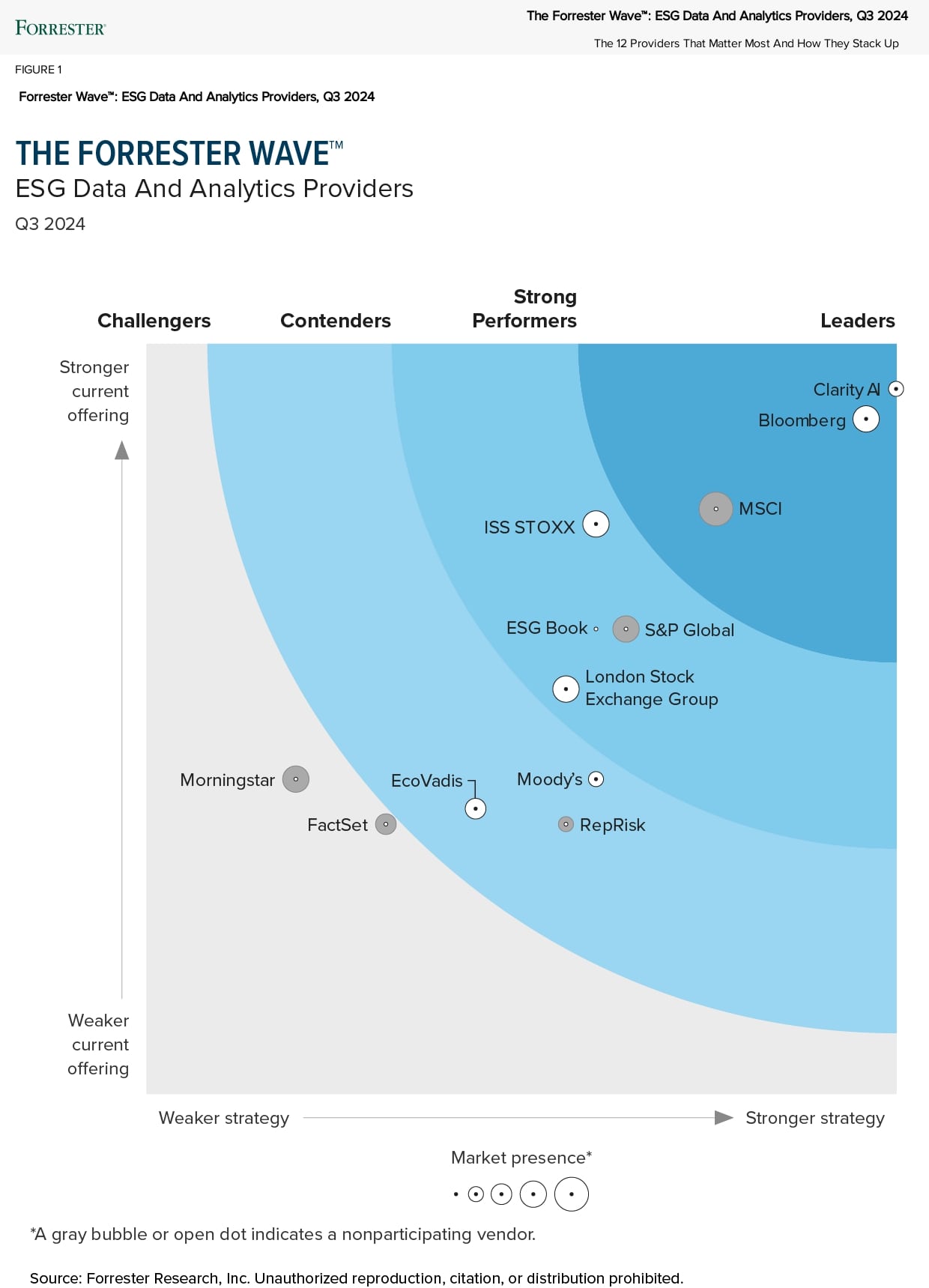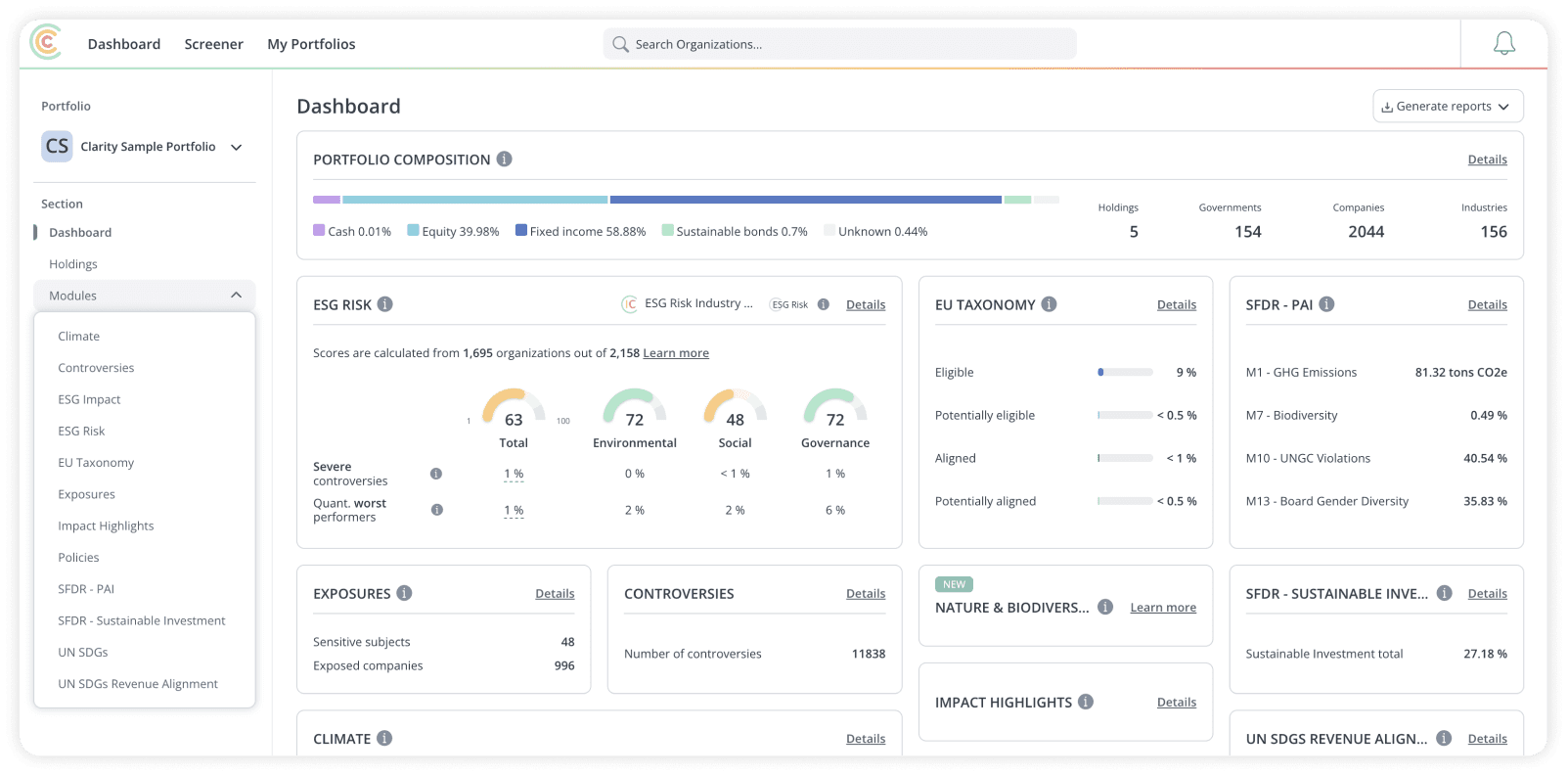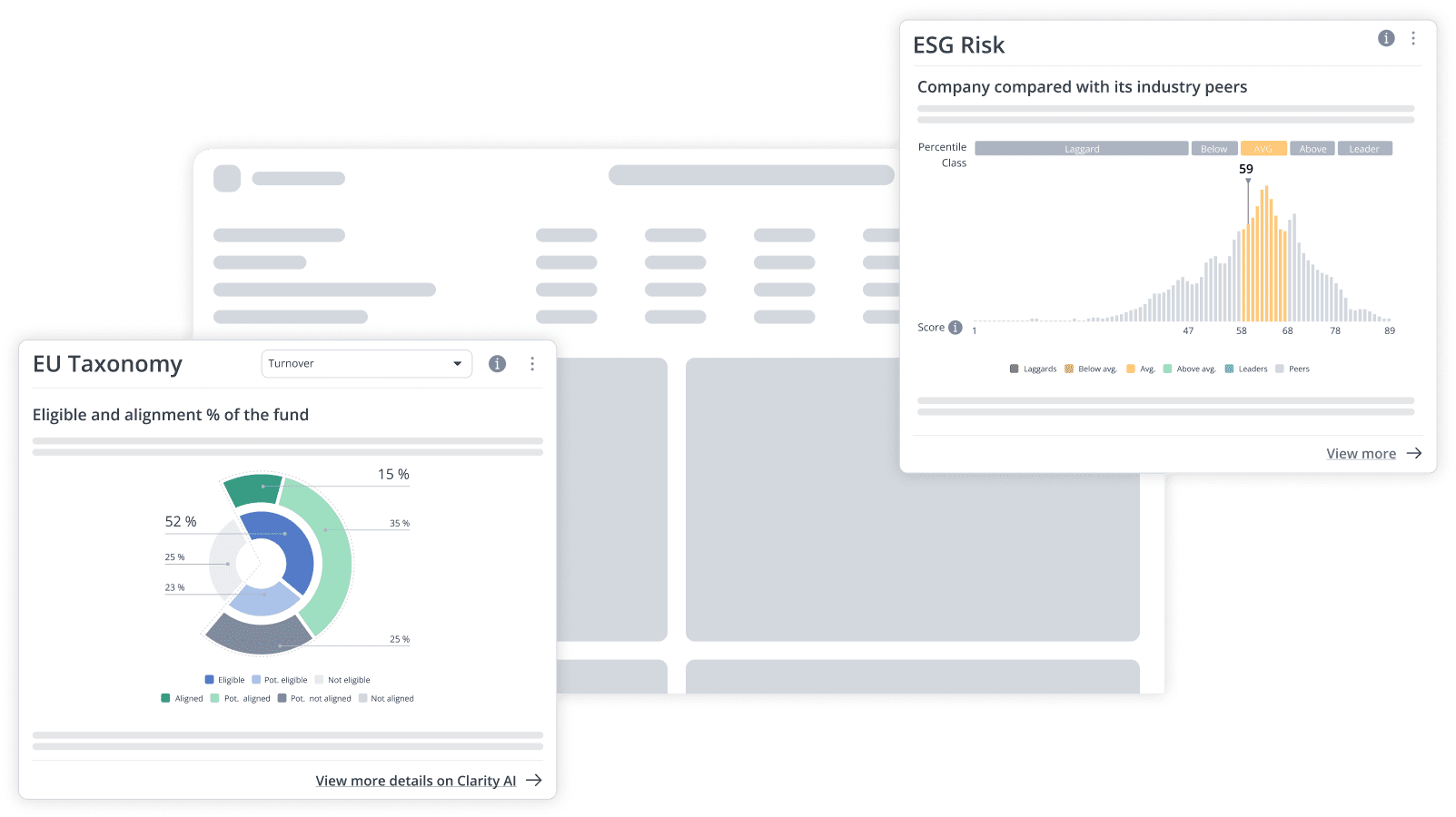EU Taxonomy Reporting: First Signs of European Utilities Going Greener
The current trend looks promising, but only 25% of utilities in the EU are reporting any alignment at all
In our last article on the EU Taxonomy, we highlighted which countries and sectors were the leaders and the laggards on reporting EU Taxonomy indicators. In this article, we will turn our attention to the actual values reported by companies focusing on eligibility and alignment reporting.
Since January 2022, companies under NFRD (Non-Financial Regulatory Disclosure) have had to report the percentage of their revenues that are eligible for the EU Taxonomy. In addition, they can also report the percentage of their capital expenditures (CapEx) and/or their operational expenses (OpEx) that are eligible for the EU Taxonomy. These three metrics are referred to as key performance indicators (KPIs).
Reporting eligibility is a first step to determining whether an activity in question can be considered under the EU Taxonomy, but does not mean that the activity is green or sustainable. For that, we need to look at alignment, which will tell you whether the activity is contributing to an environmental objective while 1) not harming other environmental objectives and 2) maintaining minimum social safeguards.
We have reviewed a sample of 950 reporting companies with the goal of answering these questions:
- Which sectors are reporting the highest and the lowest eligibility?
- Are there any differences in reported KPIs for eligibility?
- Which sectors are reporting alignment? How much alignment? Why?
Which sectors are reporting the highest and the lowest eligibility?
The sector that has the highest average eligibility is real estate, as it is well covered by the EU taxonomy under the activities of construction, acquisition, and ownership of buildings. Consumer Staples and Health Care, on the other hand, are barely represented in EU Taxonomy: companies in the business of food and household products, or pharmaceuticals and medical equipment are not yet included in the regulation. Some of these activities will be included within the new four environmental objectives, which have not yet been passed into law.
Are there any differences in reported KPIs for eligibility?
By KPI, CapEx shows more eligibility than revenue and OpEx, with the Utilities sector, showing the largest difference between CapEx and revenue.

In addition to reporting eligibility, about 51% of our sample of 950 companies present reported alignment as well. However, only 40 companies (4% of our sample) have voluntarily disclosed alignment values above 0% for at least a KPI.
By sector, we see large differences in how likely companies are to report alignment. Real estate, despite having high reporting levels of eligibility, is not sharing alignment. Utilities, on the other hand, are much more likely to share their alignment figures.

Which sectors are reporting the highest alignment?
Utilities is the sector with most companies reporting alignment above 0% and the one with the highest alignment levels. This can be explained by a significant part of the sample (31% of utilities reporting alignment) showing 100% alignment. This is, in a large part, attributable to the companies’ exposure to solar and wind energy production, which does not have technical criteria at all (meaning that the mere act of doing this activity will imply that the activity is aligned with the Taxonomy as long as it is not harming other environmental objectives and the operator is maintaining minimum safeguards).
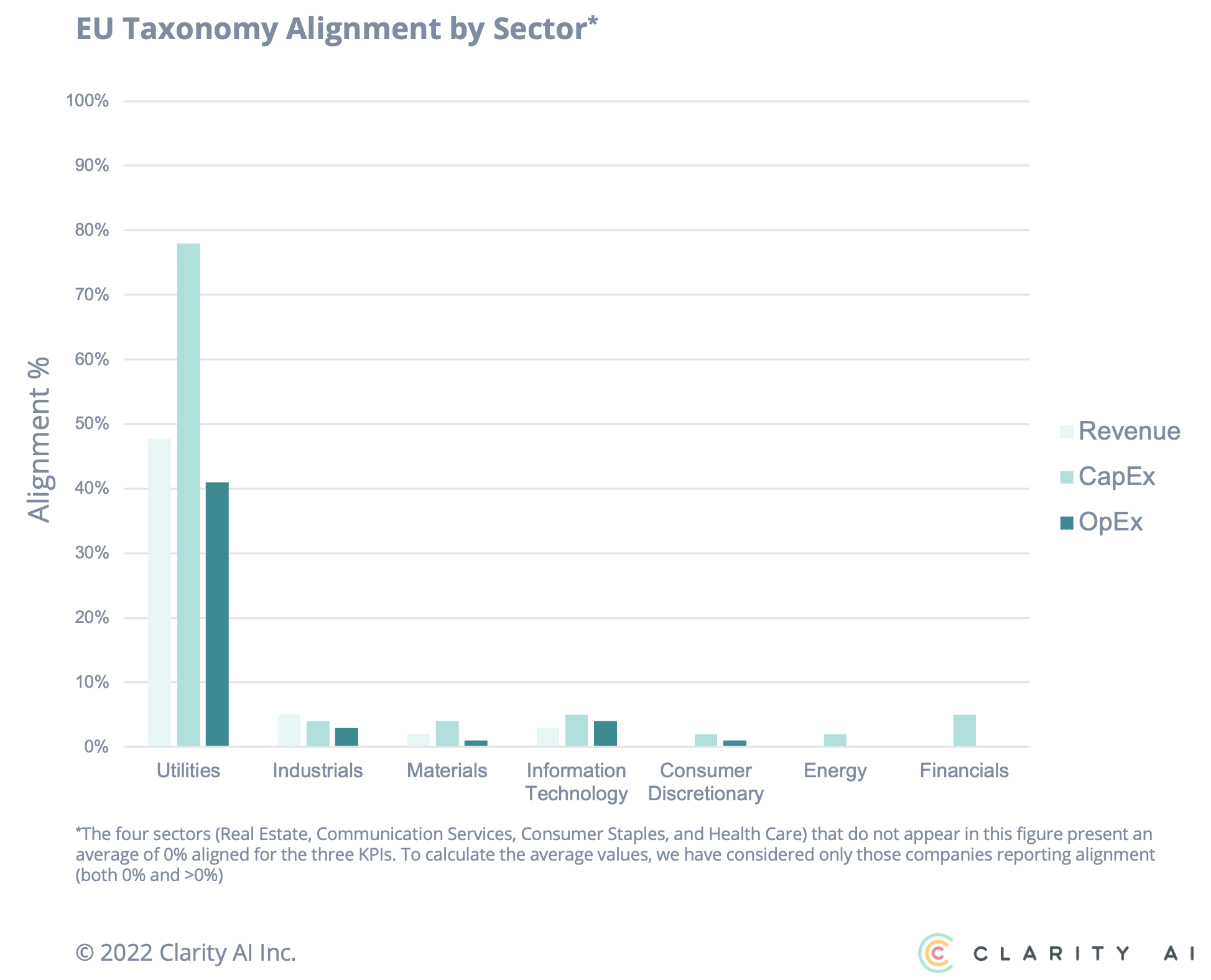
And of those utility companies not focused only on renewable energy production, we see that, through a higher CapEx alignment than revenue alignment, they are investing in transforming their energy production mix towards more sustainable alternatives:
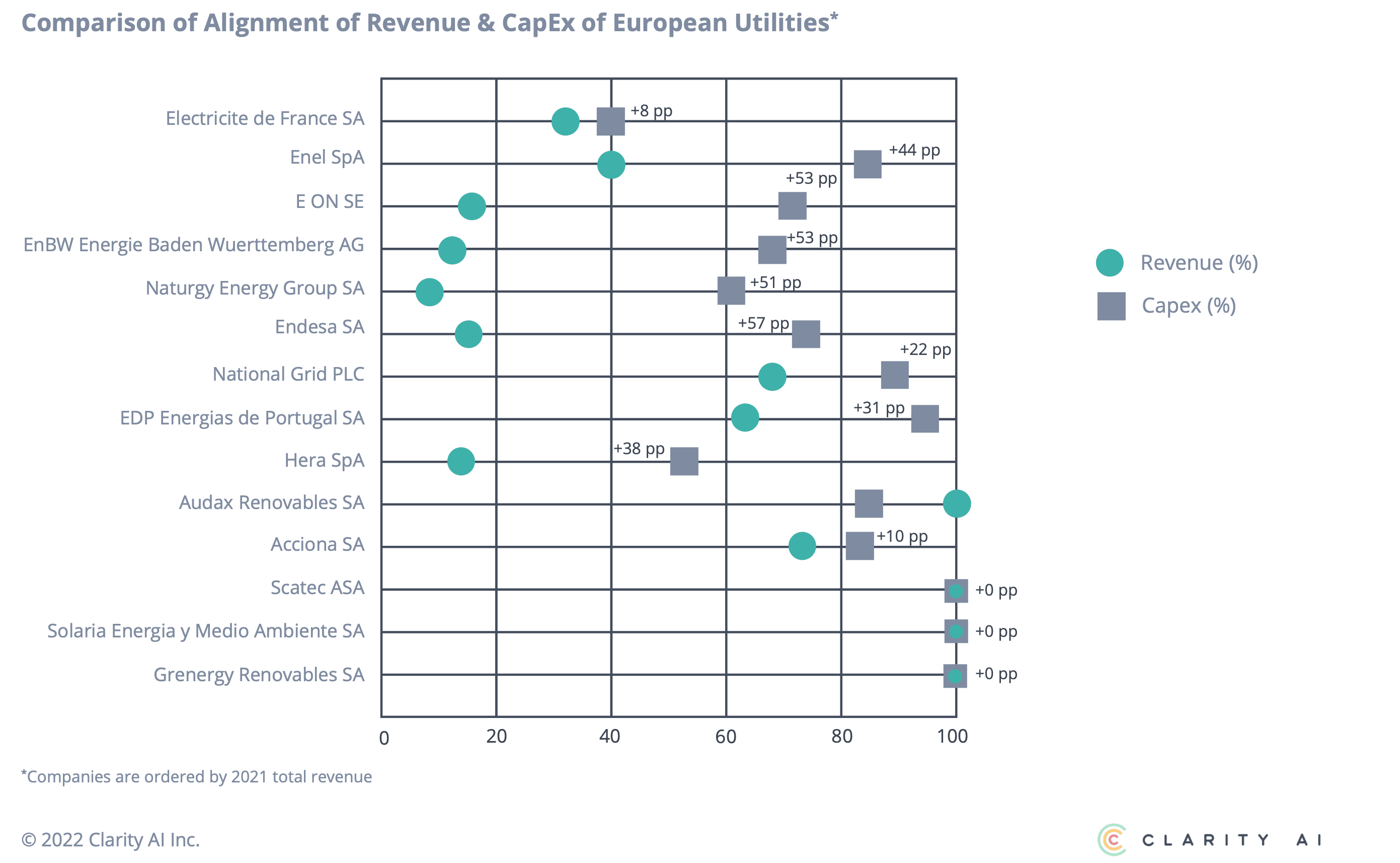
Unfortunately the battle is not over yet. While the current trend looks promising, only 25% of utilities in the EU are reporting any alignment at all. The EU regulator, as well as investors will want to see how companies are transitioning their activities to be aligned with the Paris agreement targets of achieving 55% CO2 reduction by 2030 and Net Zero by 2050. Here at Clarity AI, we follow that development closely to make sure that, once the data becomes available, we can offer it to investors wherever and however they want to consume it. Contact us to see Clarity AI’s data in action, and let us create a custom demo for your organization.



